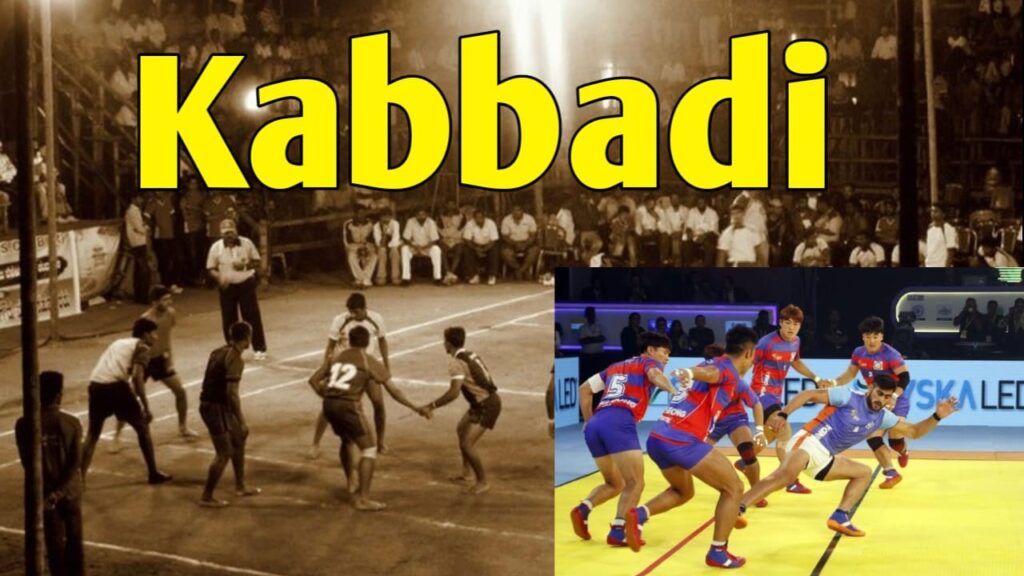Kabaddi: A Thrilling Sport of Skill and Strategy
Introduction
Kabaddi, a traditional Indian sport, has evolved into a globally acclaimed game renowned for its blend of agility, strength, and tactical prowess. It is a sport that demands not only physical prowess but also sharp mental acumen. In this blog post, we’ll delve into the intricacies of Kabaddi, from its origins to its modern-day professional leagues and international competitions.

Kabaddi: A Glimpse into History
Kabaddi, believed to have ancient roots, has been an integral part of Indian culture for centuries. The word ‘Kabaddi’ is derived from the Tamil word ‘kai-pidi,’ which means ‘holding hands.’ This sport was initially developed as a way to enhance physical fitness and teach self-defense. Over time, it evolved into a competitive team sport, captivating audiences worldwide.
Objective of Kabaddi
The primary objective of Kabaddi is for a raider to enter the opponent’s half, touch as many defenders as possible, and return to their own half without being tagged. Meanwhile, defenders aim to stop the raider by tackling or tagging them. Each successful touch rewards the raider with points while the defenders seek to prevent this, leading to a thrilling battle of skill and strategy.
Teams in Kabaddi
A standard Kabaddi team consists of seven players on each side. These players are strategically positioned as defenders and raiders. While defenders focus on stopping the raider, raiders strive to touch as many defenders as possible and return safely to their half. Effective teamwork and coordination are essential for success in Kabaddi.
Playing Field
Kabaddi is typically played on a rectangular court, often referred to as the ‘field of play.’ The court is divided into two halves, with a midline separating them. Additionally, each half has a ‘baulk line’ which raiders must cross to score points. The dimensions of the court are standardized to ensure fairness and consistency in the game.
Gameplay
The game begins with a raider entering the opponent’s half, chanting ‘Kabaddi, Kabaddi,’ to signify their turn. The raider aims to touch defenders and return to their half within a stipulated time, all while the defenders try to stop them. Points are scored based on successful touches and successful escapes.
Defenders: The Pillars of Defense
Defenders play a critical role in Kabaddi, forming the backbone of the team’s defense strategy. Their primary objective is to prevent the raider from returning to their half by tagging or tackling them. Coordination among defenders is crucial to effectively thwart the raider’s advances.
Raider’s Challenge: Skill and Strategy
The raider is the offensive force in Kabaddi. Their role demands a combination of speed, agility, and strategic thinking. A skilled raider can outsmart defenders, earning valuable points for their team. Successful raiding requires not only physical prowess but also the ability to read the game and make split-second decisions.
Rotations: Maintaining Tactical Advantage
Teams need to manage their players’ rotations effectively to maintain a tactical advantage. Substituting players strategically ensures that the team remains balanced and well-prepared for both offense and defense.
Duration of the Game: Endurance and Stamina
A standard Kabaddi match consists of two halves, each lasting for a predetermined duration. The team with the highest points at the end of the game emerges as the winner. Kabaddi demands a high level of endurance and stamina from players, as they engage in intense physical activity throughout the match.
Professional Leagues: Elevating the Game
In recent years, Kabaddi has witnessed a surge in popularity, with professional leagues like the Pro Kabaddi League (PKL) providing a platform for players to showcase their skills. These leagues have not only elevated the status of the sport but have also attracted a global fan base.
International Competition: Kabaddi on the World Stage
Kabaddi has transcended borders and gained recognition on the international stage. Countries from across the globe now participate in prestigious tournaments, further solidifying Kabaddi’s status as a truly global sport.
Conclusion: Kabaddi – Where Tradition Meets Modernity
Kabaddi’s journey from its roots in ancient India to its present-day global appeal is a testament to the sport’s enduring charm. Its unique blend of physicality, strategy, and teamwork continues to captivate audiences worldwide. As Kabaddi continues to evolve, it promises to remain a thrilling and dynamic sport for generations to come.
